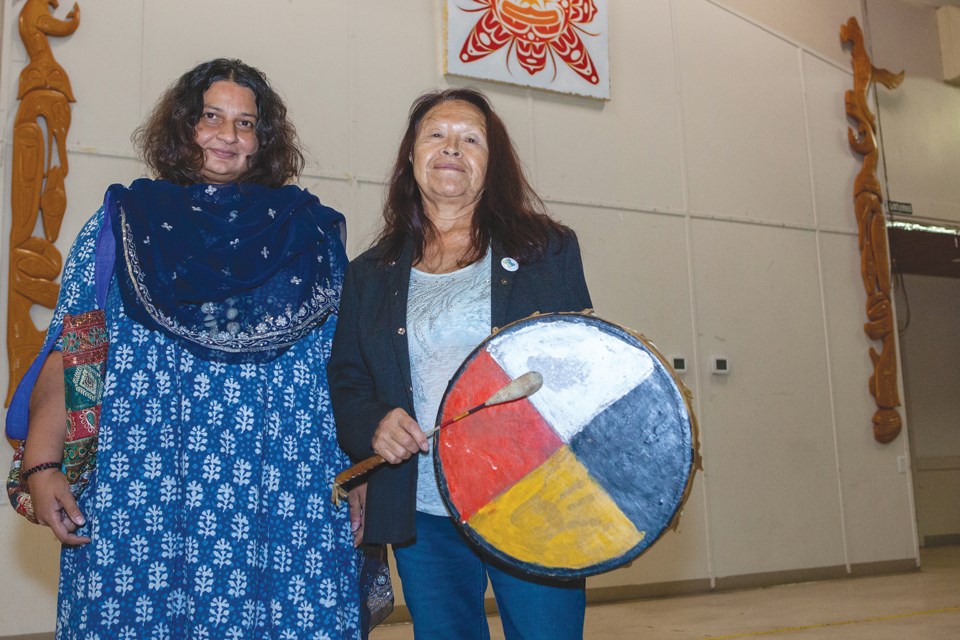The process of decolonization is afoot in an upcoming live performance that combines dance traditions from the Secwepemc (Shuswap) Nation and the Indian subcontinent.
A fusion of dance spectacular and healing journey, The buffalo dreaming will be performed in the shíshálh Nation Band Hall as part of the Sechelt Arts Festival on Oct. 22 and 23.
The original show features traditional Indian and Indigenous dances, teachings and myths within a hand-crafted setting made from repurposed materials enhanced by digital projections. The objective, according to co-directors Meera Shah and Mary Thomas, is harmony that leads from the trauma of colonization into a spirit of connection and wholeness.
While working in Williams Lake, Shah — a lifelong disciple of classical Indian temple dance forms — met Thomas, an Elder Knowledge-keeper and powwow dancer from the T’exelcemc people of the Secwepmc Nation.
Shah has developed community arts programs to facilitate creativity and healing with youth and elders. Thomas is a residential school survivor who has worked in Aboriginal child and youth mental health services. In discussion, the two discovered striking parallels between the colonial legacies borne by India and Indigenous nations in the Western Hemisphere.
“When the European colonizers left Europe, they were seeking India,” said Shah. “So that’s why, when they landed on what we’re calling Turtle Island or the Americas, they called it the Indies. And India was actually colonized by a different group of Europeans.”
Only two decades after Christopher Columbus made landfall in what is now the Bahamas, Portuguese Catholics conquered Goa, in southwest India, to serve as capital of their Asian maritime empire. India finally gained independence in 1947 with the end of British colonial rule and the emergence of Pakistan as a separate Islamic nation.
Shah and Thomas were also inspired by the Kairos Blanket Exercise, a cross-cultural education experience originally designed to introduce Canadians to the themes of the Royal Commission on Aboriginal Peoples, established in 1991 and concluded in 1996. The exercise has since been updated to explore consequences of residential schools and missing and murdered Indigenous women and girls.
“A common thread [between Indian and Indigenous cultures] is that dance and spiritual practices were outlawed,” said Shah. “In India, the British made them illegal. The same thing happened here when the potlatch and all kinds of dances were made illegal. So we’re making a joint effort to celebrate what was almost lost due to colonization. Dance is a very powerful agent in both traditional cultures.”
Shah has been rehearsing a group of Indian dancers for the production, including some first-time performers. “Part of this project was also to do community development with the South Asian community on the Sunshine Coast, which is really growing,” Shah said. Meanwhile, a group of seasoned powwow dancers will travel from Williams Lake to prepare under the supervision of Thomas.
The performance will honour the cow and buffalo as life-giving animal mothers that sustained people of the respective continents.
Because the show will explore sensitive themes, onsite support will be available for attendees. “Cultural medicines will be available for anybody who needs to check in,” said Shah. “That includes smudging and traditional plant-based medicine like cedar, sage and sweetgrass.”
Advance tickets for The buffalo dreaming are available for purchase online by browsing to secheltartsfestival.com.




